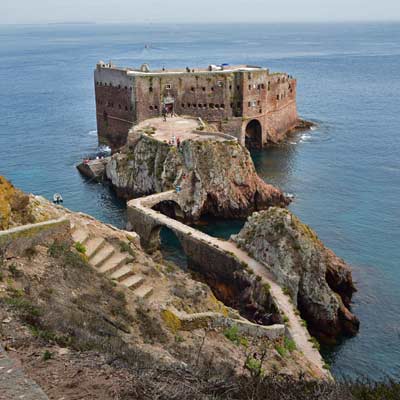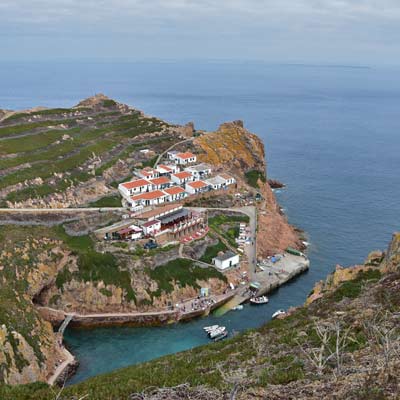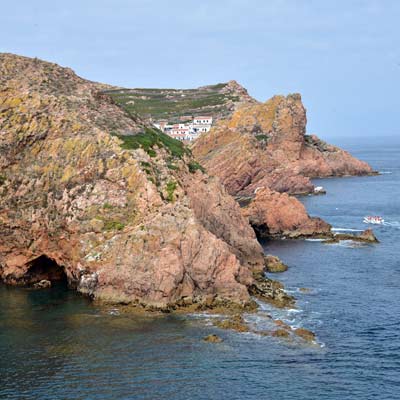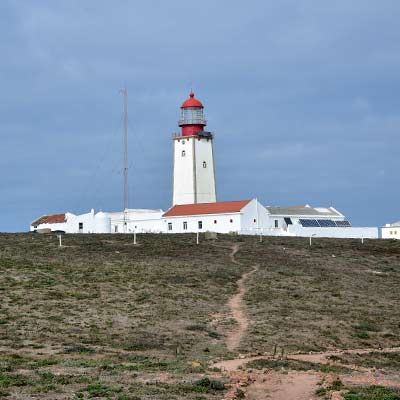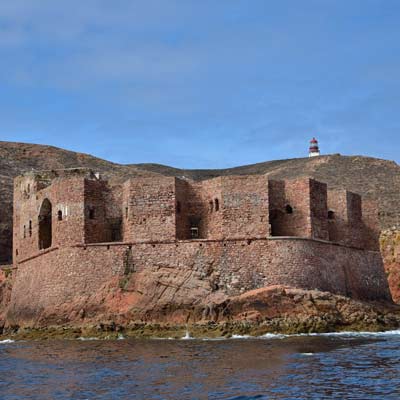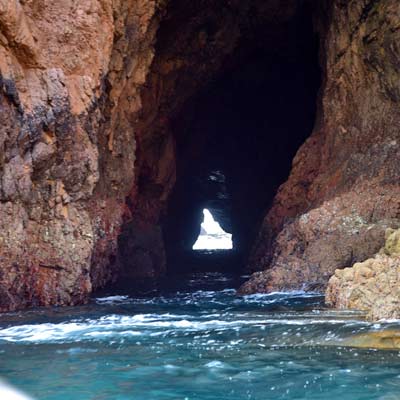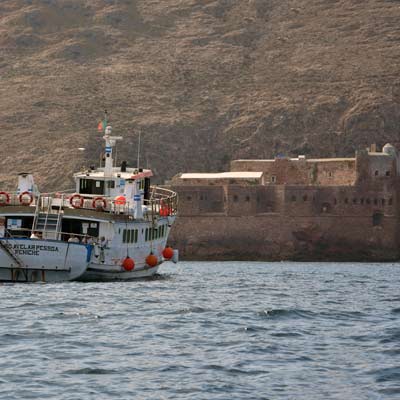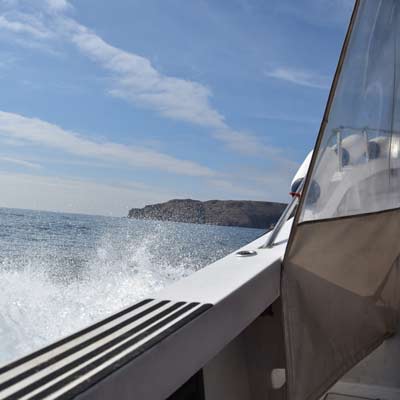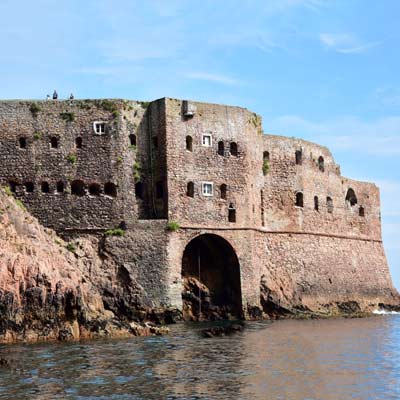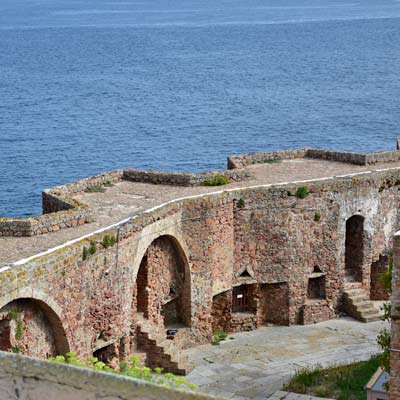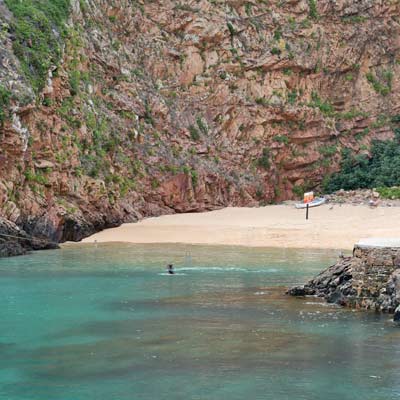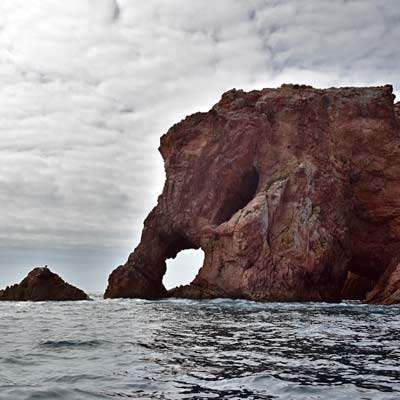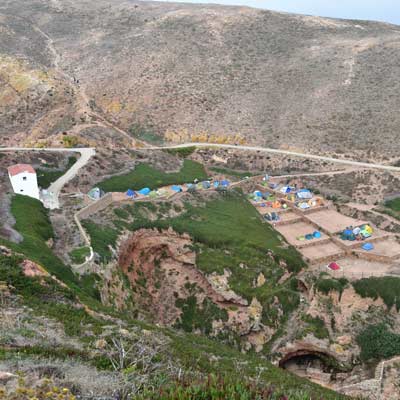MyPortugalHoliday.com
The best independent guide to the Berlengas Islands
MyPortugalHoliday.com
The best independent guide to the Berlengas Islands
The Berlengas Islands, Portugal - A day trip to Berlenga Grande
Ten kilometres off the coast of Peniche, the Berlengas archipelago rises from the Atlantic as a series of granite islands, battered by winds and relentless waves.
While they may appear barren and inhospitable, these islands form the heart of the Reserva Natural das Berlengas, a pristine marine ecosystem. The nutrient-rich, protected waters and sheltered cliffs provide a vital sanctuary for seabirds, making it one of Portugal’s most important nature reserves.
The archipelago's history is as turbulent as its surrounding waters. These treacherous seas were once notorious for shipwrecks, a grim reality that prompted the construction of a 16th-century monastery on Berlenga Grande to offer aid to sailors. The monks’ pious mission was short-lived; they were ultimately forced to abandon the outpost after frequent and brutal raids.
From the ruins of the monastery rose the formidable São João Baptista fort. This spectacular 17th-century fortification, connected to the island by a narrow stone causeway that arches over turquoise waters, stands as a defiant symbol of resilience against the ocean's power.
Today, a day trip to Berlenga Grande offers a journey into this world of raw natural beauty and dramatic history, allowing visitors to hike its trails, explore the historic fort, and take a boat tour of the magnificent coastline.
Related articles: Peniche tourist guide
The Berlengas Islands for tourists
As a tourist, it is possible to visit the largest of the Berlengas Islands, Berlenga Grande, as a day trip from Peniche.
A typical day trip to Berlenga Grande includes a boat tour of the cliff formations, a visit to the São João Baptista fort, a hike through the island's interior, bird watching, snorkelling, and opportunities for relaxing on the beach. Departing from the harbour in Berlenga Grande are glass-bottomed boat tours, which explore the caves, grottos, and view the extensive marine life.
The ferry ride from Peniche to Berlenga Grande is also very scenic, as the route follows the craggy Peniche coastline, and passes the Cape Carvoeiro headland and the Nau dos Corvos rock formation.
The day trip to Berlenga Grande is considered as one of the highlights of the Peniche region, and should be visited if you get the opportunity.
Warning: The Berlengas Islands are exposed to the huge waves of the Atlantic Ocean. This is not a recommended day trip if you are prone to seasickness.
Boat tours to the Berlengas Islands
It is only possible to travel to the Berlengas Islands via a boat tour or ferry, some of the best tours provided by GetYourGuide include:
• Day tour to the Berlengas islands from Lisbon including kayaking and snorkelling
• Berlengas Islands day trip departing from Peniche harbour
• Sightseeing Tour of Berlenga Grande – from Lisbon
Below is an interactive map for a typical day trip to Berlenga Grande.
The yellow route shows the common tourist trail (3.8km) which begins at the harbour, visits the São João Baptista Fort, the Cova do Sono viewpoint, the lighthouse and the Praia do Carreiro do Mosteiro beach. The green line is the Ilha Velha footpath (1.4km), which hikes around the much quiet northern side of the island. The blue line is the route of the small boat tours and the blue pins mark the prominent coastal features.
Key to Yellow tour: 1) Harbour 2) Forte de São João Baptista 3) Old Cisterns 4) Cova do Sono Viewpoint 5) Lighthouse 6) The Fishing village 7) Carreiro do Mosteiro beach
Boat tour 1) Greta da Inês rocks 2) Búzios grotto 3) Blue cave 4) Whale rock 5) Furado Grande (65m long natural tunnel) 6) Elephant Rock 7) Cova do Sono 8) Ponta da França headland.
There is a restaurant on the island (the Mar and Sol), but it is always advisable to bring your own water and food, as it can get busy during peak months. Berlenga Grande is part of the Arquipélago das Berlengas Nature Reserve, so visitors are encouraged to only follow the set paths, and not cause damage by wandering into the protected areas.
A day trip to Berlenga Grande is only suitable for physically fit and mobile visitors, as some of the footpaths are very worn and there are lots of hills to climb.
Travel to the Berlengas Islands
All of the ferries to the Berlengas Islands depart from Peniche harbour, and along the harbour walkway are the ticket offices for all of the tour companies. A standard ferry journey takes 45 minutes, and a return ticket costs €20 (€12 for one way). The more exciting and faster speedboat costs €23 for a return, with the journey time is reduced to just 20 minutes. Berlenga Grande is the only island with a sheltered harbour and allows visitors.
Top Tip: When departing from Peniche, sit on the right side of the boat, as this side faces the dramatic cliffs of the Peniche headland.
There are multiple tour companies with regular boat services to Berlenga Grande, and a selection of the companies include:
https://viamar-berlenga.com/en/tickets/
http://www.feelingberlenga.pt/en/
https://julius-berlenga.com.pt/viagem/
(links open new tabs)
During the summer, always book tickets in advance or early in the day, as the trips are very popular and there is a limited number of seats on the boats. In the autumn and spring, there can be frequent cancellations due to the weather, and in the winter many tour companies close for the entire season.
The São João Baptista Fort
The São João Baptista Fort lies on the sheltered side of the Berlenga Grande and was constructed in the 17th century to prevent a staging area for seaborne assault along the western coastline of Portugal.
This little fort is one of the most visually striking buildings in Portugal, rising up from the shallow turquoise sea waters and connected to the island by narrow arched bridges.
The defensive prowess of this seemingly tranquil setting was best demonstrated in June 1666, when just twenty soldiers withstood a siege by 16 Spanish warships and over 2,000 men. The fort was only abandoned when its stock of ammunition was exhausted, but the attack cost the lives of 500 Spanish sailors compared to just one Portuguese soldier who died.
Today, the historic fort has been transformed into a hostel and is open to the public to explore. As one of the most atmospheric locations to stay in Portugal, it is an absolute bargain at €22/€20 (high/low season) per night; just don't expect many modern comforts.
Tourists, please note: Many pictures of the São João Baptista fort on the internet have been extremely enhanced, to such an extent that they are almost fake. Please do not be disappointed if the bright orange fort surrounded by turquoise waters is not what you find.
Berlengas Lighthouse (Farol Duque de Bragança)
The Praia do Carreiro do Mosteiro beach
The beach itself is named after the 16th-century monastery, which was situated above the harbour and has now been converted into a restaurant. The stones from the abandoned monastery were used to construct the São João Baptista Fort.
Glass-bottomed boat cave tours
Camping
If you've found our content valuable, we'd welcome your support.
The digital publishing landscape has evolved significantly. As a small independent publisher, we face growing challenges. Search engines increasingly favour paid content over organic results, while AI-generated content often reproduces original work without attribution.
To support our work, please consider bookmarking this page (press Ctrl + D) for quick access. If you find an article helpful, we'd be grateful if you'd share it with friends on social media.
For specific questions, please see our Reddit community at r/LisbonPortugalTravel.
Should you notice any outdated or incorrect information, please contact us at [email protected]
Thank you for helping us continue to provide valuable content in an increasingly challenging digital environment.
